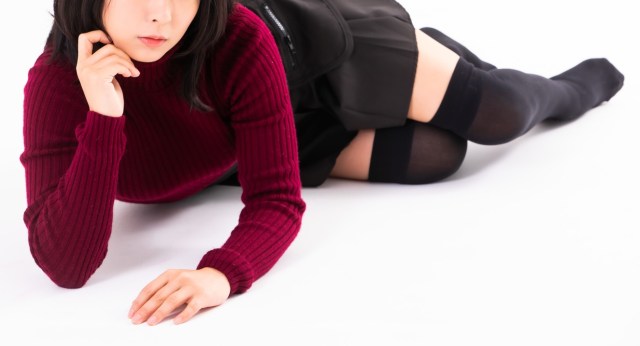Adult entertainment guidance center appears in Akihabara, some worry neighborhood is changing

Photos show otaku district’s iconic Kitchen Jiro restaurant has been replaced by something very different.
While it’s best known as a place to shop for anime merch, video games, and electronics, Tokyo’s Akihabara neighborhood is a pretty good place to eat too. Since the district is a mecca for all-day shopping trips, it boasts a number of casual restaurants offering tasty, hearty fare that’ll fill your stomach without emptying your wallet.
So many regular denizens of Akihabara were saddened at the end of September when beloved restaurant Kitchen Jiro closed down. Then they became sad again this month when something else opened up in the same building.
秋葉原のキッチンジロー跡地、無料案内所になるみたい (絶句 pic.twitter.com/eHAbaFSqLx
— ヽ(°▽、°) (@NIPPONPON) December 23, 2020
With its hot pink sign and gigantic font, the storefront does a remarkable job of standing out, yet at the same time doesn’t seem to want anyone to be able to see inside from the street. The reason for this “HEY COME ON IN (but no one will see you)” dichotomy has to do with the service being offered. The new tenant of the Kitchen Jiro building is a muryo annaijo, which translates to “free guidance center.” However, muryo annaijo don’t specialize in general tourism info like sightseeing recommendations or maps of the subway system; those kinds of places are called kanko annaijo/“tourism guidance centers.” Instead, muryo annaijo are where people go to get info on local hostess bars, erotic massage parlors, and other business in the fuzoku (adult entertainment) industry.
ほんまに無料案内所出来るんや
— revolver (@get_orallove) December 23, 2020
秋葉原はどないなって行くんや… pic.twitter.com/4ZuxL5h70Z
Being Tokyo’s otaku culture mecca, a walk around Akihabara will yield plenty of posters and signs featuring popular anime characters with beckoning smiles or smoldering eyes, and if you venture up to the higher-level floors of its dojinshi shops, you’ll see plenty of those characters’ other body parts as well. And yes, the neighborhood is where the whole maid cafe craze got started. However, full-on fuzoku businesses haven’t really made inroads into Akihabara as they have in other parts of downtown such as certain sections of Shinjuku, Roppongi, or Ikebukuro. A muryo annaijo in Akihabara is a startling sight (the sign claims it’s Akihabara’s first ever), and many online commenters aren’t happy to see that one has sprung up.
▼ Adding insult to injury is that vestiges of the old Kitchen Jiro name (キッチンジロー) can still be seen at the top of the wall.
痴呆民は秋葉原に憧れる節が多々あるけど、現実秋葉原自体オタ向けとしてはオワコンの街
— イリュリアあっと9A-91狂信者 (@iry_sight) December 23, 2020
よく行く人からすれば加藤無双以前の秋葉原がピークで今の秋葉原は、量産型なろう系ラノベ並みに詰まらない。
池袋や新宿で見られる無料案内所が出来た時点で秋葉原に魅力は1ミリも無い pic.twitter.com/MJdIc1Zu3F
Reactions on Twitter have included:
“Whoa, now that’s disappointing.”
“Fuzoku? Well, that’s it for Akihabara.”
“Is this the look the local chamber of commerce wants for the neighborhood?”
“I guess you could say the maid cafes were like fuzoku-light, but this is a whole other level.”
“Sad. Just so sad.”
“Give us back Kitchen Jiro!”
“Akihabara doesn’t need this.”
“In 20 years, will Akihabara have transformed from ‘Electric Town’ to ‘Fuzoku Town?’”
秋葉原ジャンク通り、キッチンジローさん跡地です。
— あすたりすく (@akiba_asterisk) December 23, 2020
ご確認下さい。#akiba pic.twitter.com/ZBPqfVt13k
Part of the shock likely comes from the fact that in most cases, a neighborhood fills up with fuzoku businesses first, then a muryo annaijo comes in to promote them and help would-be customers choose which one to visit. Right now, though, there aren’t that many fuzoku establishments in the Akihabara area, so dropping a muryo annaijo on one of its most popular shopping streets is sort of putting the horse in front of the cart.
However, muryo annaijo tend to target curious but inexperienced individuals, and as such, there’s a chance that its presence could contribute to a gradual change in the neighborhood atmosphere. Several local shops and entertainment centers have closed during the pandemic-related economic downturn and tourism drop (Akihabara was a major draw for both international and domestic Japanese travelers), and there’s a chance that this is a sign that some of those vacancies are going to be filled by fuzoku or fuzoku-like businesses.
Source: Twitter via Jin, Akiba Keizai Shimbun
Top image Pakutaso
● Want to hear about SoraNews24’s latest articles as soon as they’re published? Follow us on Facebook and Twitter!
Credit:

0 comments:
Post a Comment